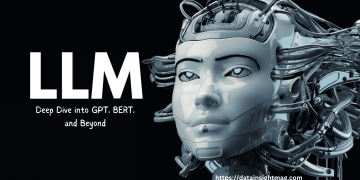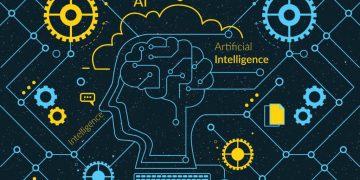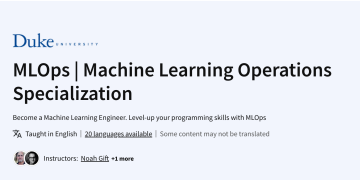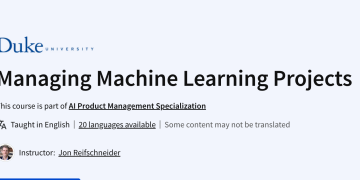What do you do before going to the market?
- You make list of items you want to buy in advance.
- You put the price on the items.
- You make the decision based on the previous experience with the purchase.
- Then, you go and buy the items.
Hey, with the increasing inflation, fixing price won’t be easy. You will notice that a lot of times your budget get deviated. This is because the storekeeper often changes the quantity and price of a commodity.
Because of those reasons, you need to update your shopping list. Updating the list takes a lot of work, analysis and time. This is where Machine Learning can come to your rescue.
Introduction to Machine Learning
Machine Learning coined by Arthur Samuel in the 1950s is a subset of Artificial Intelligence which deals with algorithms, statistic models and analytics. Machines have historically been programmed to obey certain instructions given to them, and have not had the opportunity to make decisions.
Machine learning improves this by analyzing, predicting, or classifying different data to find the optimal solution. Machine Learning allows a system to make statistically meaningful decisions based on the data obtained during previous interactions. Machine learning makes way for a future in which a device over time will acquire intelligence.
What is Machine Learning?
Machine learning is the field of study that gives computers the ability to learn without being explicitly programmed.
In simple term, Machine Learning means making prediction based on data.
Machine learning is the most common technique of predicting the future or classifying information in order to help people make the decisions required.
Machine learning algorithms are trained on examples or instances from which they learn from past experiences and evaluate historical data as well. Therefore, as it trains through the instances, it is able to recognize trends again and again in order to make predictions about the future.
Data is the core backbone of machine learning algorithms. With the help of the historical data, we are able to create more data by training these machine learning algorithms.
Machine Learning is a combination of computer science, mathematics and statistics. Statistics are essential to develop inferences from the results. Mathematics is helpful in the design of machine learning models, and finally, the use of computer science to implement algorithms.
Why do we need Machine Learning?
A large variety of data is not addressed by the conventional programming approach, whereas with Machine Learning, the more is always merrier and with the vast amount of data that we produce, state-of-the-art Neural Nets models are now possible for fast pattern recognition.
Let’s look at an example of some of the most simple stuff we do almost every other day, such as ordering food, grocery stores or even clothing, all of which are just a click away, is driven by Machine Learning, which can identify patterns, patterns and learn from them without explicit programming.
Applications of Machine Learning
The emergence of ML technology revolutionized our lifestyle. They are now so intertwined with our everyday activities that we rely on them most of the time to fulfill our tasks. Machine Learning primarily powers the smartphones that most of us can’t imagine our lives without. Right from unlocking the phone to using the different built social media and e-commerce applications, run on complex neural networks that are rigorously trained to provide us with seamless use.
Machine Learning is recognized by many industries in the ever-progressing world for its development and to stand out from their competitors. Sectors such as Finance, Retail, Healthcare, Transport to name a few uses Machine Learning to reach out to more people and to create a personalized bond with them by taking into account their likes and dislikes.
Top Companies such as IBM, Google, Microsoft, Intel, Apple, Tesla, Facebook, Netflix, Instagram use Machine Learning effectively for reliable, fast and effective business decision making.
Prerequisite to Machine Learning?
What draws us to this area is the amazing things that can be done with Machine Learning. But what one fails to note is that there is a lot going into the context that makes an ML-driven application successful. Machine Learning is about how well you can communicate with the machine in order to complete the work.
Proficiency in the Scripting Languages i.e. Python or R is a must. Contrary to popular opinion, to get started with Machine Learning one does not need to be a proven mathematician or statistician. Working knowledge about the basics, however, is a must, and the predefined libraries in programming Languages such as Python and R will take care of the job very well. Furthermore, it is also important to eliminate the rust from one’s analytical skills as 80 percent of the time goes to the study and collection of the right kind of data in constructing a good ML model.
Target Audience?
Machine Learning Tutorials are mostly aimed at graduate students and working professionals such as analysts , data scientists, or developers who are believed to have some advanced knowledge of the computer science principles. The audience, however, need not be limited to only certain sets of men. Anyone with basic analytical and programming skills that are combined with the right attitude and dedication can learn Computer.
How does machine learning work?
Machine Learning is a form of artificial intelligence ( AI) that teaches computers to think in the same way as people do: learn and improve past experiences. It works by data exploration, pattern identification and involves minimal human intervention.
With machine learning, almost any task which can be completed with a data-defined pattern or set of rules can be automated. This allows companies to transform processes that previously only humans could perform — think responding to customer service calls, bookkeeping, and reviewing resumes.
Common Machine Learning Algorithms?
1. Linear Regression
2. Decision Tree Learning
3. Support Vector Machines
4. Association Rule Learning
5. Artificial Neural Networks (ANN)
6. Inductive Logic Programming
7. Reinforcement Learning
8. Clustering
In this post we look at what machine learning is about what you need to start a career in machine learning, the application of machine learning and common algorithms used in machine learning.






















